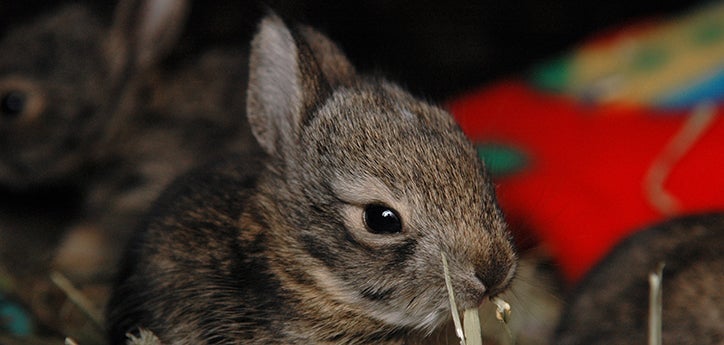Key Benefits of Hiring Specialists for Wildlife Removal Burlington
Key Benefits of Hiring Specialists for Wildlife Removal Burlington
Blog Article
The Role of Humane Wildlife Removal in Protecting Local Ecosystems
Humane wild animals elimination is not simply an honest factor to consider but a critical component in protecting regional ecological communities. By focusing on non-lethal techniques, it attends to the fragile equilibrium between human expansion and wildlife environment preservation.
Recognizing Human-Wildlife Problems
Human-wildlife disputes usually occur when the natural habitats of pets intersect with human activities, leading to competitors for sources and room. As urbanization and farming growth continue to trespass upon wildlife territories, pets such as raccoons, deer, and prairie wolves find themselves in closer closeness to human populaces. This proximity can lead to harmful effects on both wild animals and people, as animals may trigger damages to crops, facilities, and personal effects while people might accidentally hurt wild animals through environment destruction and various other anthropogenic stress.
The complexity of these conflicts comes from an array of aspects. Changes in land usage, climate adjustment, and the fragmentation of environments typically force wild animals to adapt to brand-new environments, often leading them into domestic or business locations. Furthermore, the schedule of human-generated food sources, such as rubbish and pet food, can bring in wild animals to human settlements, worsening communications and potential disputes.
Resolving human-wildlife conflicts needs a nuanced understanding of animal habits, environmental characteristics, and socio-economic factors to consider. By examining these communications, conservationists and policymakers can create approaches that aim to reduce problems while maintaining biodiversity and maintaining environmental equilibrium. The goal is to cultivate coexistence and decrease damaging effect on both human communities and wildlife populations.
Value of Non-Lethal Techniques
Non-lethal approaches of wildlife removal embody this principles by supplying remedies that protect against damage to wild animals while resolving human issues. By utilizing such methods, we can manage wild animals interactions without resorting to deadly procedures, thus maintaining animal populations and reducing moral worries associated with killing.
Non-lethal approaches are vital in preserving eco-friendly balance. They make certain that species remain to fulfill their roles within communities, such as managing parasite populaces or pollinating plants. These approaches typically prove much more reliable in the lengthy term, as getting rid of specific pets can develop a gap that is rapidly filled up by other members of the varieties or various species completely. This can lead to a cycle of ongoing removal efforts, whereas non-lethal deterrents attend to the source of wildlife visibility.
In addition, non-lethal approaches foster conjunction by informing the public concerning wild animals actions and encouraging unified living methods. This awareness can result in more lasting human-wildlife interactions, inevitably guarding both area interests and pet welfare.
Advantages for Biodiversity
When non-lethal wild animals removal techniques are used, they contribute considerably to biodiversity conservation. By making certain the risk-free moving of pets rather than their obliteration, these methods keep environmental balance and safeguard the honesty of ecosystems.

Additionally, these techniques foster coexistence in between human beings and wildlife, lowering unfavorable interactions and maintaining the rich tapestry of life that defines biodiverse regions. This approach motivates a deeper understanding and regard for wildlife, fostering area support for preservation initiatives. Eventually, gentle wildlife elimination is a crucial element in securing biodiversity, i thought about this ensuring ecosystems stay vivid and useful for future generations.
Strategies for Efficient Removal
Implementing reliable methods for gentle wild animals elimination requires a comprehensive understanding of animal behavior and habitat demands. This expertise offers as the structure for establishing strategies that make certain the secure and moral moving of wild animals.
An additional important strategy is using exemption techniques, which concentrate on sealing entry factors to protect against animals from going back to frameworks. This technique not only resolves the immediate problem but also acts as a long-term option, decreasing future disputes between humans and wild animals. In addition, the use of safe deterrents and repellents can urge pets to abandon areas voluntarily, complementing other elimination efforts.
Capture and relocation should constantly be a last option, used only when animals present a direct danger or are unable to leave on their very own. In such situations, making use of humane catches and making certain the release of pets in appropriate environments are vital to safeguarding their well-being. Collaboration with wildlife experts and adherence to lawful laws even more boost the effectiveness of these techniques.

Supporting Coexistence in Urban Areas
Advertising conjunction in metropolitan locations calls for a multifaceted technique that balances human advancement with the requirements of neighborhood wildlife. As urbanization continues to increase, it is important to carry out approaches that mitigate human-wildlife problems while protecting biodiversity. Urban coordinators and policymakers have to integrate eco-friendly areas, such as parks and wildlife corridors, into city styles to supply habitats for native types. These locations not just support wildlife but also improve the click now quality of urban life by improving air quality and offering leisure rooms for residents.
Education and learning and recognition projects are vital in promoting a culture of coexistence. Locals need to understand the importance of wild animals and the role they play in local ecosystems. Workshops and educational sessions can furnish neighborhoods with understanding on exactly how to reduce conflicts, such as safeguarding trash and utilizing humane deterrents to prevent wild animals invasion.
Moreover, innovation can play a considerable function in advertising conjunction. The use of wild animals monitoring systems, for example, can help track animal movements and educate metropolitan preparation decisions. Partnerships between ecological organizations, city governments, and community groups can better enhance these initiatives, guaranteeing that urban growth advances sustainably while valuing the environmental equilibrium.
Conclusion
Humane wild animals elimination is necessary for maintaining ecological balance and biodiversity by employing non-lethal techniques that reduce injury to pet populaces. Inevitably, advertising conjunction in city locations cultivates an unified partnership in between people and the natural environment, making sure lasting ecological communities for future generations.
As urbanization and farming growth proceed to intrude upon wild animals regions, pets such as coyotes, raccoons, and deer find themselves in closer closeness to human populaces. Non-lethal techniques of wildlife removal personify this principles by supplying solutions that avoid harm to wild animals while addressing human problems. By using such methods, we can handle wildlife communications without resorting to deadly steps, thus preserving animal populaces and minimizing ethical worries connected with murder.
Executing effective approaches for gentle wild animals removal requires a comprehensive understanding of pet behavior and habitat requirements.Humane wild animals elimination is vital for preserving eco-friendly equilibrium and biodiversity by employing non-lethal techniques that reduce injury to animal populaces.
Report this page